Iron is an essential mineral that helps plants convert sunlight and water into food. It’s responsible for over 50% of all photosynthesis in plants. But plants can’t function properly when Iron is in short supply. This can have several effects, the most common of which is iron deficiency.
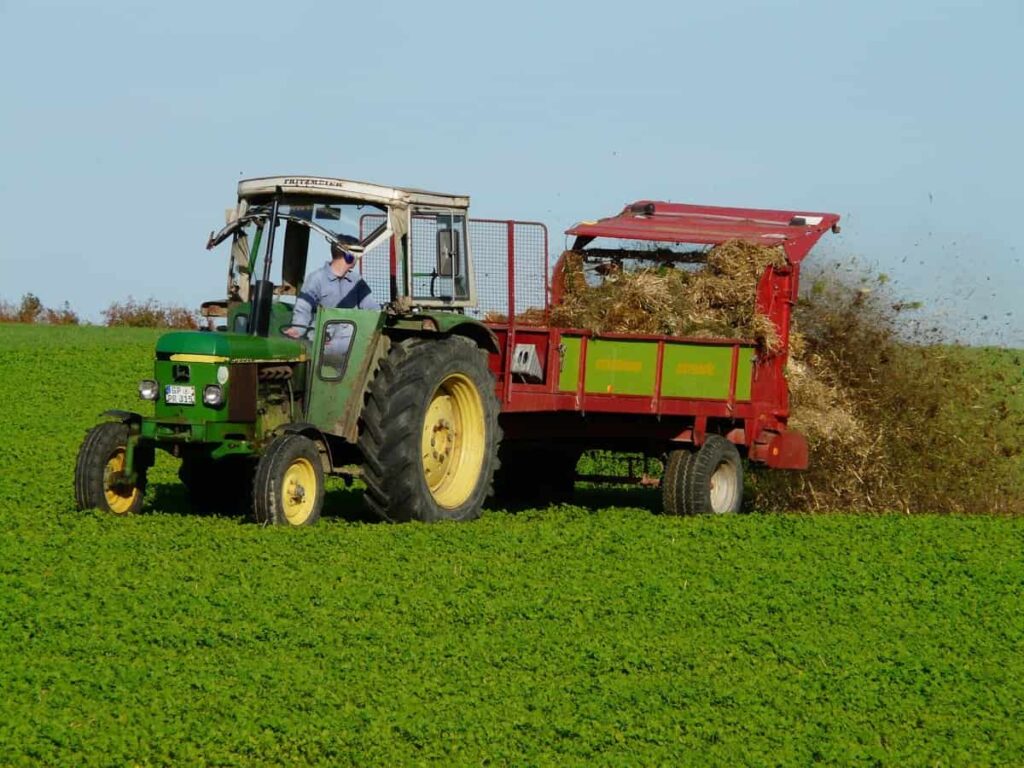
How to fix iron deficiency in plants and soil
Role of Iron in plants and soil
Iron is an essential mineral for plant growth. Iron also synthesizes chlorophyll, a pigment that helps plants photosynthesize. In addition, Iron is necessary for storing carbohydrates, water, and nitrogen. It helps make proteins, nucleic acids, and enzymes. Iron also allows plants to transport carbon dioxide and water in their leaves. There are different types of Iron available to plants. Chelated Iron is the form that plants most easily absorb.
Chelated Iron can travel through water and other media more easily than unchelated Iron, making it more efficient for plants. Chelated Iron is also more stable in soils than unchelated Iron, which means it will not break down as quickly over time. Most plants get their Iron from the soil. However, Iron can also be found in some plants, such as leafy greens and tomatoes. You can help your plants get enough Iron by fertilizing them with iron-rich products or adding Iron to your garden soil.
What is Iron deficiency in soil and plants?
Iron is an essential nutrient for plants, and soil can be deficient in Iron if the soil is not adequately aerated or has low levels of organic matter. Iron deficiency in plants can cause leaves to turn yellow, stunted growth, and decreased yields. Iron deficiency in soil can also cause poor plant growth, chlorosis (a yellowing of the leaves), and fungal overgrowth.
In case you missed it: How to Fix Calcium Deficiency in Soil and Plants: Symptoms, Causes, Adding Naturally, and Chemically
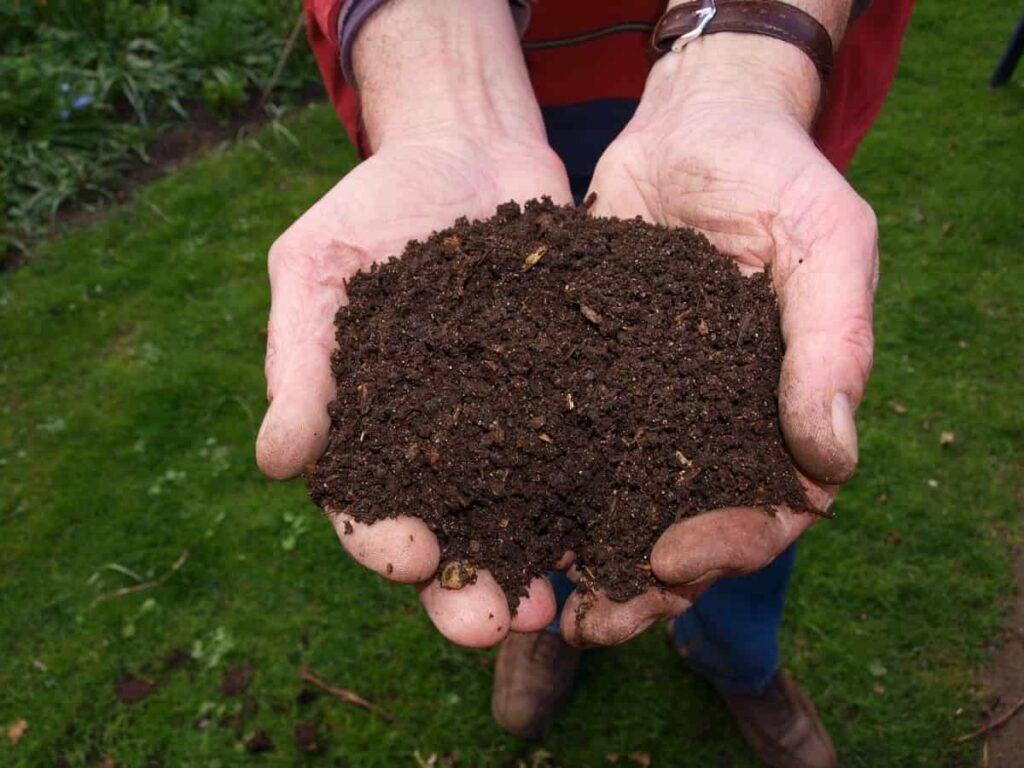
What are the deficiency symptoms of Iron in soil?
Iron is an essential mineral for plants, and when it’s unavailable in the soil, it will start to show deficiency symptoms. Iron deficiency in plants can cause wilting, stunted growth, and leaves that are pale or yellow. Additionally, iron-deficient plants may have a poor root system and difficulty extracting nutrients from the soil.
Deficiency symptoms can change depending on the plant, but they often include yellowing of leaves and flowers, stunted growth, and reduced yields. This can lead to yellowing foliage, stunted growth, and decreased yields from crops dependent on photosynthesis (such as fruits and vegetables). Other signs that your plants may be suffering from an iron deficiency include:
- Poor seed germination
- Reduced leaf color
- Weakness or wilting
- Plants that are growing slowly or not at all
How do you solve Iron deficiency in soil?
Iron is an essential nutrient for soil and plants. Iron deficiency in plants can lead to stunted growth, leaves with a yellow or orange tinge, and wilting of plants. Iron deficiency in soil can cause the same symptoms as in plants, leading to decreased crop production and reduced resistance to pests and diseases.
There are several ways to fix the iron deficiency in the soil. One way is to add iron sulfate or iron oxide to the soil directly. Another way is to add compost rich in organic matter, such as manure or composted plant material, to the soil. Finally, you can use chemicals such as chelates or ferrous sulfate to supplement the mineral content of the soil.
Tips to solve Iron deficiency in soil
1. Iron is a common mineral found in various plants, and animals absorb it to varying degrees. Look for plants commonly grown in your areas, such as cabbage, beets, potatoes, and apples. If you have trouble sourcing iron from natural sources, consider adding an iron supplement to your gardening regimen.
2. Compost is high in organic matter and helps improve soil fertility. It also contains trace minerals like Iron that can help to fix deficiencies in plants and soil. Use 1/3 of a cup of compost per acre of garden land, spread evenly when planting new crops or renovating older gardens.
In case you missed it: How to Fix Magnesium Deficiency in Plants and Soil: Causes, Symptoms, Adding Naturally, and Chemically
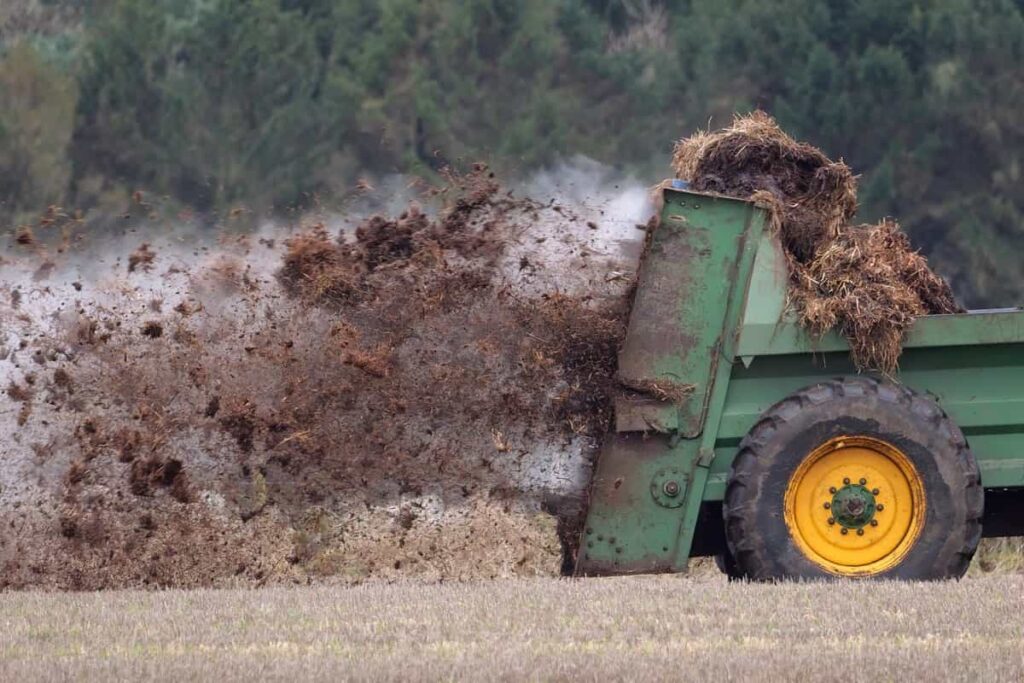
3. Both shredded bark or leaves help retain moisture and discourage weed growth while providing essential nutrients like nitrogen and potassium to the soil below the mulch layer. In addition, mulching helps keep the soil cool, which reduces the amount of water needed by the plant and increases its uptake of Iron.
4. Organic matter helps to hold onto Iron and make it available to plants.
5. Prune your trees and shrubs regularly to remove old branches and leaves that may be holding onto iron-rich debris.
6. Apply a balanced fertilizer made specifically for vegetables, flowers, or fruit crops with high levels of Iron to the soil around your plants at planting time or during bloom season.
7. Use Slug baits or garlic to repel slugs and snails, sucking up all available nutrients from your plants’ roots.
8. Check pH levels regularly to adjust them as needed to help your plants absorb more nutrients. For example, the soil’s pH level can affect how easily nutrients like Iron are released from the soil into the plant’s system.
9. Inspect your irrigation system for clogs or leaks and fix them as necessary to maintain an adequate supply of water to the root zone of your plants
How to fix Iron deficiency in plants?
One of the most common deficiencies in plants is Iron. Iron is a necessary nutrient for growth and development and can also be used by plants to produce chlorophyll. While it’s not a major deficiency, an iron deficiency can lead to other problems, such as decreased yields, stunted growth, and yellow foliage. There are several ways to fix the iron deficiency in plants and soil, including adding commercially available iron supplements or chelating agents, increasing ferrous soil content, and using organic methods such as composting and mulching.
Additionally, chemically treating plants with nitrogen-containing fertilizers or herbicides can cause iron deficiencies. So, make sure to check the ingredients list before you apply these treatments. Keep an eye on your garden to determine if you need to add more Iron to the soil or water it more often; adjust your gardening tactics accordingly.
In case you missed it: How to Fix Zinc Deficiency in Soil and Plants: Symptoms, Effect, Causes, Adding Naturally, and Chemically
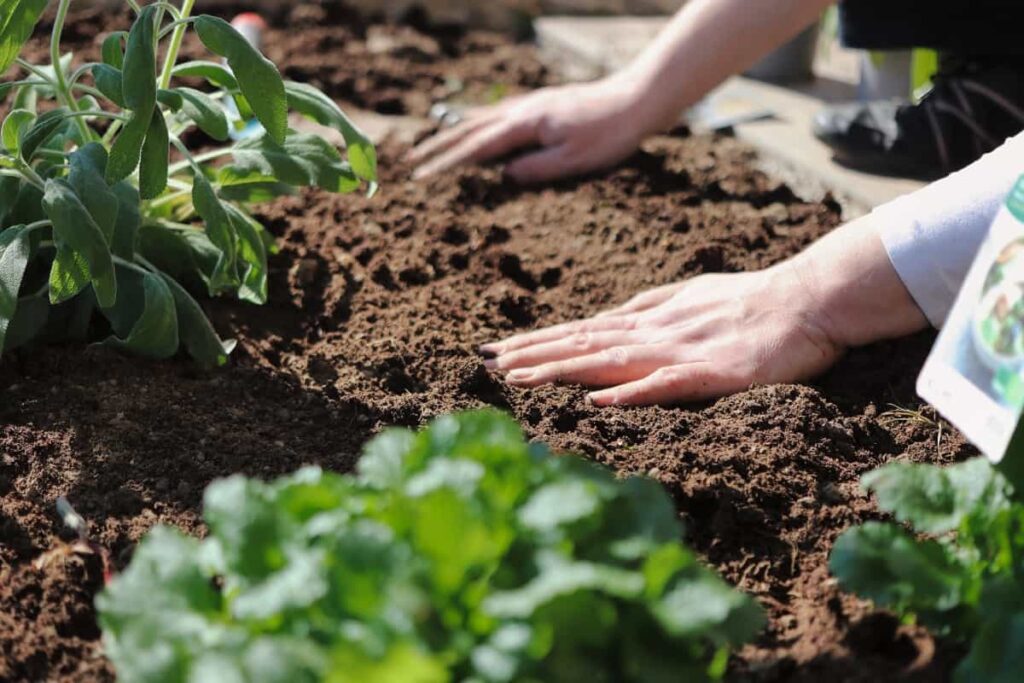
Several ways to test for iron deficiency in plants
- Feather samples: Take a feather sample from a leaf and test it for iron content.
- Soil test: To test soil for iron content, you will need to make a ferric hydroxide solution (available at most garden stores). Soil can also be tested using colorimetry or absorbance techniques.
- Plants under stress: When plants are under stress (for example, growing rapidly during the early stages of growth), their ability to uptake and use Iron may be impaired. Plant specimens affected by iron deficiency should have lower-than-normal levels of Iron in their tissues.
- Looking at the leaves: Iron deficiency will cause the leaves to become pale green or yellowish, while an excess will cause them to turn red or purple.
- Checking the root system: An Iron deficient plant will have thin roots that are light brown or reddish. An excess of Iron will result in thick green or black roots.
- Checking the levels of chlorophyll: Iron deficiency will decrease the amount of chlorophyll present in the leaves, while overabundance will cause them to turn green.
Causes of iron deficiency in plants
- Low soil fertility due to lack of organic matter or poor drainage
- Too much lime or fertilizer being used
- Plants were grown in an area with high levels of pollution
- Drought or water stress
- Poor plant nutrition
- Weeds that compete with the plant for nutrients
- Iron deficiency in plants is usually caused by insufficient soil or plant uptake of Iron
Tips to prevent Iron deficiency in plants
- Know the signs of iron deficiency in plants and your soil. Look for stunted growth, yellowing leaves, and poor overall health.
- Add organic matter to your soil to help improve its ability to hold nutrients and enrich the soil with beneficial organisms.
- Consider using an iron chelator like humic acid to help remove Iron from the soil.
- Use soluble fertilizers that include elemental Iron to promote plant growth and prevent nutrient deficiencies.
- Avoid overuse of nitrogen-based fertilizers, which can deplete soils of other essential nutrients like phosphorus.
- Keep an eye on plant pH levels, as too high or low a pH can also lead to iron deficiency in plants. Try using a buffer such as a limestone to adjust the pH level accordingly.
- Monitor water usage in your garden, especially during heavy rainfalls when pools of water form that can carry minerals away from the roots of plants. Limit watering when possible to avoid stressing plants unnecessarily and prematurely causing them to suffer from Iron deficiency symptoms.
Ways to remediate iron deficiencies in plants
There are several ways to remediate iron deficiencies in plants and soil. For example, adding elemental sulfur helps increase available Fe for uptake by plants, while adding potassium helps ensure enough nitrogen is known for good crop growth. Organic matter such as compost may also help improve overall soil fertility conditions, thereby increasing the availability of other nutrients such as zinc and manganese, which are also necessary for good plants.
In case you missed it: How to Fix Copper Deficiency in Plants and Soil: Causes, Symptoms, Adding Naturally, and Chemically
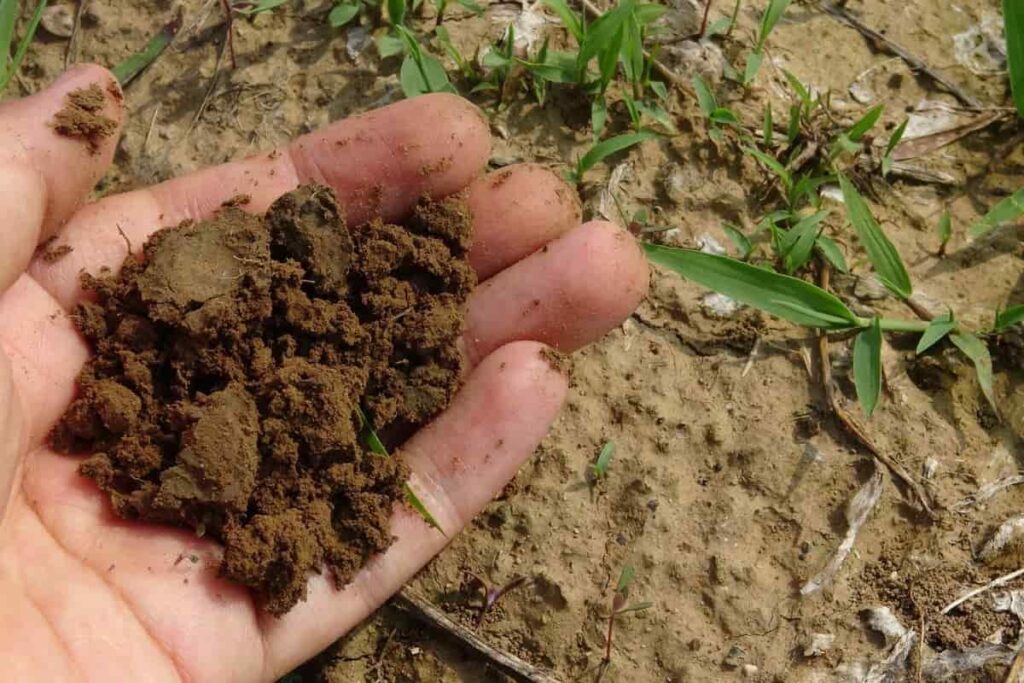
How to add chemically Iron to plants
Iron is an essential mineral for plant growth. Iron is often found in the soil but can be depleted if the soil’s pH level is low or if there’s insufficient organic matter. Iron deficiency can cause leaves to become limp and discolored, stunted growth, and weak flowers. Adding Iron to your garden can help restore balance and prevent problems. There are several ways to add Iron to plants:
- Add insoluble iron minerals such as ferrous sulfate, gluconate, or iron oxide to the soil. These minerals will eventually dissolve into the soil and help to provide Iron for plants.
- Use a chelated form of Iron such as ferric EDTA. This forms a complex with other elements in the plant’s cells, which means that it is more easily absorbed by the plant and doesn’t damage beneficial bacteria cultures essential for plant growth.
- Combine elemental Iron with an organic fertilizer such as fish emulsion or bone meal. This will increase the availability of soluble forms of Iron for uptake by plants.
- Iron sulfate is an elemental form of Iron that must be applied as a granular material, usually at rates of 2 ounces per acre or 1 pound per thousand square feet of land, to correct anemia in plants or soil caused by iron deficiency. It can also be used to control blue-green algae, which can convert phosphorus into nitrogen fertilizer for algae growth and excessive foliage growth in plants.
- Add ferrous sulfate granules to the soil before planting crops that need more Iron, such as leafy vegetables and cottonseed trees. Ferrous sulfate helps the plant absorb more Iron from the soils it grows in and prevents its uptake by bacteria that can cause spoilage of produce later on.
You first need to determine the root cause to fix plant iron deficiency. This can be done by looking at the plant’s soil composition and analyzing how much Iron was available to the plant when it was deficient. Once you know how much Iron is needed, you can add it using any of several methods:
- Adding elemental iron (Fe)
- Adding ferrous sulfate
- Adding nitratine
- Using chelation agents
- Using phytase enzymes
- Using organic acids
When using elemental iron (Fe), make sure that it is not already combined with other elements such as Copper or Manganese. These elements will bind with the Fe and render it ineffective. To avoid this problem, use a fertilizer with just Fe alone. You can also apply elemental Fe as a slurry directly to the soil surface or use a fertigation system that delivers it directly to the root zone.
Fix Iron deficiency in soil and plants naturally
Iron is an essential mineral for plants and soil. Iron deficiency can cause leaves to turn yellow, stunted growth, and decreased yields. The common causes of iron deficiency in plants are inadequate soil fertility and poor water management. You can naturally fix the iron deficiency in plants by adding organic matter, sulfur, and manganese to the soil. Additionally, you can use chelation agents (such as EDTA) to bind Iron in the soil. Chemical methods include applying ferrous sulfate or iron filings to the plant roots.
In case you missed it: How to Fix Boron Deficiency in Soil and Plants: Symptoms, Causes, Adding Naturally, and Chemically
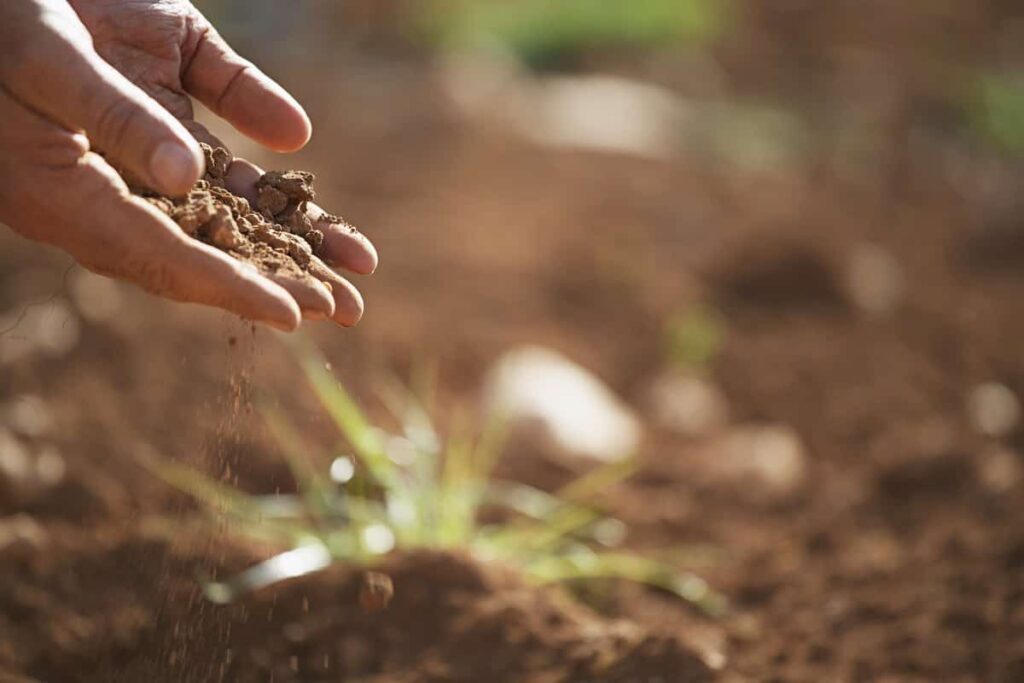
- Add composted manure or aged animal manure to the ground as a fertilizer.
- Apply chelated iron supplements (available at garden centers) directly to the plant roots.
- Prune away infected branches or leaves with high levels of iron deficiency.
- Plant Iron-rich plants in your gardens, such as blackberries, raspberries, and mulberry trees, to help absorb excess Iron from the soil.
- Harvest fruits and vegetables high in bioactive minerals, such as kale, Brussels sprouts, tomatoes, and spinach, which contain high levels of Iron.
- Eat heirloom vegetables and fruits that are higher in trace minerals like copper, zinc, manganese, and molybdenum, which can help increase the amount of available Iron for the plant’s uptake.
- Use legumes such as chickpeas or soybeans as nitrogen-fixing crops in your garden to add nitrogen to the soil that can help increase the availability of other nutrients like Iron for plant uptake.
- Fertilize with elemental sulfur instead of synthetic fertilizers that contain nitrogen and other nutrients that can compete with Iron for absorption by plants.
How to treat Iron deficiency in plants?
Firstly, you need to determine the cause. If it’s due to low soil levels or poor water management, adding more amendments (such as compost) and watering more often will help improve conditions. On the other hand, suppose the problem is due to fertilizer use or lack of organic matter in the soil. In that case, supplementation with iron chelates (a type of fertilizer that contains Iron) or organic Amendments such as kelp may be necessary.
However, if treating iron deficiency in plants is not an option because there is no available source of supplemental Iron or the plant is too damaged to repair, chemical intervention may be necessary. Iron chelate formulations are highly effective when applied as a foliar spray directly to leaves; however, care must be taken to avoid toxicity symptoms (such as leaf scorching). Iron sulfate can also be used as a foliar spray or top-dressing on soils; however, adverse effects such as stunted growth and yellowing of foliage may occur if applications are excessive.
Conclusion
Plants need Iron to function correctly. Without enough Iron, plants can’t make chlorophyll and other proteins, which results in a loss of growth, yellowing of leaves, and reduced fruiting. Iron also helps plants hold onto moisture and nutrients. When Iron becomes scarce in the soil, leaves may become pale or turn yellow and droop.
This is caused by a lack of chlorophyll and an impaired ability to absorb nutrients from the soil. However, too much Iron can also lead to excessive growth and plant toxicity problems. Therefore, it’s essential to balance the amount of Iron in your garden.
- How to Make Houseplants Bushy: Effective Tips and Ideas
- Innovative Strategies for Boosting Coconut Pollination and Yield
- Pollination Strategies for Maximum Pumpkin Yield
- The Complete Guide to Chicken Fattening: Strategies for Maximum Growth
- Natural Solutions for Tulip Problems: 100% Effective Remedies for Leaf and Bulb-Related Issues
- Revolutionizing Citrus Preservation: Towards a Healthier, Greener Future
- Natural Solutions for Peony Leaf and Flower Problems: 100% Effective Remedies
- Maximizing Profits with Avocado Contract Farming in India: A Comprehensive Guide
- Natural Solutions for Hydrangea Problems: 100% Effective Remedies for Leaf and Flowers
- The Ultimate Guide to Choosing the Perfect Foliage Friend: Bringing Life Indoors
- From Sunlight to Sustainability: 15 Ways to Use Solar Technology in Agriculture
- The Ultimate Guide to Dong Tao Chicken: Exploring from History to Raising
- The Eco-Friendly Makeover: How to Convert Your Unused Swimming Pool into a Fish Pond
- Mastering the Art of Delaware Chicken Farming: Essentials for Healthy Backyard Flocks
- 20 Best Homemade Fertilizers for Money Plant: DIY Recipes and Application Methods
- How to Craft a Comprehensive Free-Range Chicken Farming Business Plan
- Brighten Your Flock: Raising Easter Egger Chickens for Beauty and Bounty
- How to Optimize Your Poultry Egg Farm Business Plan with These Strategies
- Subsidy for Spirulina Cultivation: How Indian Government Schemes Encouraging Spirulina Farmers
- Ultimate Guide to Raising Dominique Chickens: Breeding, Feeding, Egg-Production, and Care
- Mastering the Art of Raising Jersey Giant Chickens: Care, Feeding, and More
- Ultimate Guide to Raising Legbar Chickens: Breeding, Farming Practices, Diet, Egg-Production
- How to Raise Welsummer Chickens: A Comprehensive Guide for Beginners
- How to Protect Indoor Plants in Winter: A Comprehensive Guide
- Ultimate Guide to Grow Bag Gardening: Tips, Tricks, and Planting Ideas for Urban Gardeners
- Guide to Lotus Cultivation: How to Propagate, Plant, Grow, Care, Cost, and Profit
- Agriculture Drone Subsidy Scheme: Government Kisan Subsidy, License, and How to Apply Online
- Ultimate Guide to Raising Araucana Chickens: Breed Profile, Farming Economics, Diet, and Care
- Bringing Hydroponics to Classroom: Importance, Benefits of Learning for School Students
- Ultimate Guide to Raising Polish Chickens: Breed Profile, Farming Economics, Diet, and Care
- Ultimate Guide to Raising Australorp Chickens: Profile, Farming Economics, Egg Production, Diet, and Care
- Silkie Chicken Farming: Raising Practices, Varieties, Egg Production, Diet, and Care
- Sussex Chicken Farming: Raising Practices, Varieties, Egg Production, Diet and Care
- Homemade Feed Formulations for Livestock: Discover Cost-effective Starter to Finisher Feed Recipes
- 20 Best Pig Weight Gain Supplements: Top Swine Weight Gain Formulas
- Ultimate Guide to Elderberry Farming: Propagation, Planting, Yield, Cost, and Profit